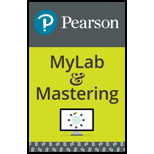
FOUNDATIONS OF FINANCE- MYFINANCELAB
10th Edition
ISBN: 9780135160572
Author: KEOWN
Publisher: PEARSON
expand_more
expand_more
format_list_bulleted
Question
Chapter 17, Problem 1RQ
Summary Introduction
To discuss: The reason why company A has more cash than company D
Expert Solution & Answer
Explanation of Solution
Company A may thought of holding an unusually huge cash value in expectation of an acquisition opportunity. Furthermore, the cash may be used as a precaution for future happenings when it needs the cash and when they are unable to raise in some situation. Thus, company A holds more cash.
Want to see more full solutions like this?
Subscribe now to access step-by-step solutions to millions of textbook problems written by subject matter experts!
Students have asked these similar questions
if $500 is placed in an account that earns a normal 6 % compounded quarterly, what will be worith in 10 years.
a. $907
b. $1,045
c. $980
d. $ 1,020
e. $117.48
what is the approximate yield to maturity (YTM) of a bond that is currently selling for $1,150 in the market place ? the annual bond has 20 years remaining until maturity and pays a 14% coupon. (assume annual interest payments and discounting)
a. 14%
b. 7%
c. 6%
d. 12%
If blurr image please comment i will write values.
please dont Solve with incorrect values otherwise unhelpful.
Chapter 17 Solutions
FOUNDATIONS OF FINANCE- MYFINANCELAB
Ch. 17 - Prob. 1RQCh. 17 - Prob. 2RQCh. 17 - Prob. 3RQCh. 17 - What are the two major objectives of the firms...Ch. 17 - Prob. 5RQCh. 17 - Prob. 6RQCh. 17 - Prob. 7RQCh. 17 - Prob. 8RQCh. 17 - Prob. 9RQCh. 17 - Prob. 10RQ
Ch. 17 - Prob. 11RQCh. 17 - Prob. 1SPCh. 17 - Prob. 2SPCh. 17 - Prob. 3SPCh. 17 - (Interest rate risk) Two years ago your corporate...Ch. 17 - Prob. 6SPCh. 17 - Prob. 7SPCh. 17 - Prob. 8SPCh. 17 - Prob. 9SPCh. 17 - Prob. 10SPCh. 17 - Prob. 11SPCh. 17 - Prob. 1MCCh. 17 - Prob. 2MCCh. 17 - Prob. 3MCCh. 17 - Prob. 4MC
Knowledge Booster
Similar questions
- Inferior Investment Alternatives Although investing requires the individual to bear risk, the risk can be controlled through the construction of diversified portfolios and by excluding any portfolio that offers an inferior return for a given amount of risk. While this concept seems obvious, one of your clients, Laura Spegele, is considering purchasing a stock that you believe will offer an inferior return for the risk she will bear. To convince her that the acquisition is not desirable, you want to demonstrate the trade-off between risk and return. While it is impractical to show the trade-off for all possible combinations, you believe that illustrating several combinations of risk and return and applying the same analysis to the specific investment should be persuasive in discouraging the purchase. Currently, U.S. Treasury bills offer 2.5 percent. Three possible stocks and their betas are as follows: 1. What will be the expected return and beta for each of the following portfolios? a.…arrow_forwardSolve this fin. Qn no aiarrow_forwardYou gave me unhelpful so i also gave you unhelpful.arrow_forward
- What is corporate finance? how many types of corporate finance??arrow_forwardEsfandairi Enterprises is considering a new three-year expansion project that requires an initial fixed asset investment of $2,350,000. The fixed asset will be depreciated straight-line to zero over its three-year tax life, after which time it will be worthless. The project is estimated to generate $3,310,000 in annual sales, with costs of $2,330,000. Assume the tax rate is 23 percent and the required return on the project is 11 percent. What is the project's NPV? Note: A negative answer should be indicated by a minus sign. Do not round intermediate calculations and round your answer to 2 decimal places, e.g., 32.16.arrow_forwardGyygvvv iiiedfarrow_forward
arrow_back_ios
SEE MORE QUESTIONS
arrow_forward_ios
Recommended textbooks for you
 EBK CONTEMPORARY FINANCIAL MANAGEMENTFinanceISBN:9781337514835Author:MOYERPublisher:CENGAGE LEARNING - CONSIGNMENT
EBK CONTEMPORARY FINANCIAL MANAGEMENTFinanceISBN:9781337514835Author:MOYERPublisher:CENGAGE LEARNING - CONSIGNMENT


EBK CONTEMPORARY FINANCIAL MANAGEMENT
Finance
ISBN:9781337514835
Author:MOYER
Publisher:CENGAGE LEARNING - CONSIGNMENT